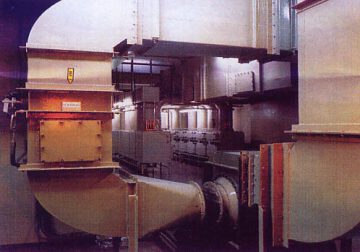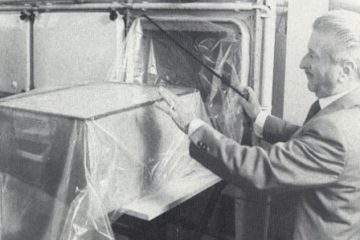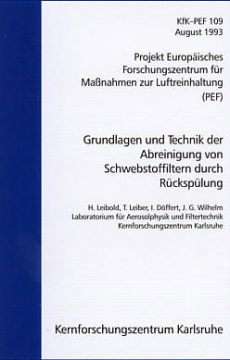History
1969
 License agreement with the Nuclear Research Centre Karlsruhe.
License agreement with the Nuclear Research Centre Karlsruhe.
Mr Kalman Andrasfalvy sen. signed a license agreement with the “Nuclear Research Centre Karlsruhe” to design and manufacture 2-stage HEPA filter units to filter radioactively charged dusts from atmospheric air.
The main requirements were at that time already
- the total protection of operator, and
- the avoidance of contamination of the environment at any time.
This means it must be guaranteed
- that the operator could not be contaminated at any time when handling the system.
- that the environment could not be polluted at any time with radioactively charged dusts.
- that even in the case, if a module has to be taken out of the air flow, the other modules take over by a modular construction.
1975
 Further development and patent applications worldwide.
Further development and patent applications worldwide.
Together with his son Mr. Kalman Andrasfalvy jun., the today Managing Director of Containment Technology GmbH, Mr. Kalman Andrasfalvy sen. transferred this technology to the application of dust laden process air by maintaining the above requirements in the nuclear industry.
By the new self-cleaning HEPA filter system, process air with highest dust loads could be filtered with the filter efficiency H14 EN 1822.
The filter cassette change and the dust recovery could be made at the highest required OEB level.
1976
First applications of self-cleaning HEPA filter units in industry to filter hazardous to health dusts in compliance with COSHH (Control of Substances Hazardous to Health)
The first customers were those dealing with dusts such as cadmium, asbestos, lead, chemicals, etc.
1978
First applications of self-cleaning HEPA filter units in pharmaceutical industry.
The manufacture of API´s (Active Pharmaceutical Ingredients), such as cardiac medication, became possible for the first time due to the availability of self-cleaning HEPA filter units.
1989
Further development of the self-cleaning HEPA filter system to meet the specific requirement in Pharmaceutical industry.
Start of global sales of standardized unit concepts for the Pharmaceutical industry. The basic requirements in Pharmaceutical industry were equal to the ones in Nuclear industry.
New was that the security level of this filter system had to be grated from OEB 1-6. Additionally it became important to provide a concept with a holistic approach, so that the cross-contamination of products could be avoided effectively.
1991
First cooperation with laminar flow and isolator manufacturers.
For the first time it became possible to provide integrated concepts for pharmaceutical production lines. These concepts ensured:
- effective capture of dust at source.
- fully protection of personnel.
- guaranteed avoidance of cross-contamination
- total protection of the environment by 2-stage HEPA filtration
Furthermore, a fully contamination free dust recovery by the use of isolators and safe filter change by a bag-in bag-out system became possible.
1993
 Scientific verification and validation of the self-cleaning HEPA filter system.
Scientific verification and validation of the self-cleaning HEPA filter system.
In the project “European Research Centre for Air Pollution Prevention Measures”, this system was scientifically analyzed, approved and certified as state-of-the-art technology, which is valid even today.
2007
Foundation of Containment Technology GmbH
The new company was founded based on the 38 years of experience and expertise of Mr. Andrasfalvy Jr., as Managing Director in the preceding years.
Once again, the cleanable HEPA filter system has been further developed in detail and today the system is the technological market leader worldwide anew.
The areas of application in the Food and Cosmetics industry, as well as in General industry dealing with hazardous to health dusts have been maintained.
The new focus of the Company´s activity became to engineer turn-key-solutions for production lines in all kind of industries.
Effective dust capture during:
- manual handling, and
- machine production of pharmaceutical solids.
Air management and supply of additional components such as:
- lifting tables for contamination-free filter replacement
- use of RTP ports,
- vacuum transfer systems,
- isolators for dust recovery
close the gap in containment.
The filter system could from now on be validated and became a “real” production machine.